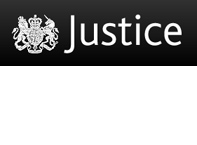Important changes to the Civil Justice rules relating to the conduct of bodily injury claims will be introduced on 1st April and 31st July 2013.
BACKGROUND
A number of civil justice reforms will be implemented in April and July 2013 which will radically reform the litigation landscape. These changes will have a significant impact on the timescales for investigating and commenting on liability claims. Significant cost savings are also anticipated due to a number of amendments to how claims are funded.
• Success fees and After the Event Insurance premiums will no longer be recoverable by the losing party where new funding arrangements are entered into on or after 1 April 2013
• There will be Qualified One-Way Costs Shifting (QOCS) for personal injury claims. This means that, save for certain situations, costs will not be payable by an unsuccessful claimant to a defendant. This comes into force on 1 April 2013 for claims funded by the new arrangements
• Under the new rules there will be an increase of 10% in General Damages (pain, suffering and loss of amenity) to balance the non-recoverability of success fees from the paying party
• All Employers’, Public and Product Liability bodily injury claims (valued between £1,000 and £25,000) will be dealt with via an electronic portal. The exception will be any disease claims where there is more than one defendant
• Letters of claim and postal claims will be replaced by Claim Notification Forms (CNF)
• The majority of Employers’ Liability CNFs will be sent directly to the insurer. However Public and Product Liability notifications are likely to be sent directly to policyholders.
TIMESCALES
Once a claim is notified, there will be strict, non-negotiable deadlines to be adhered to:
• CNFs must be acknowledged electronically within 24 hours
• From receipt of the CNF, liability decisions must be made within 30 business days for Employers’ Liability and 40 business days for Public and Products Liability
• For Employers’ Liability claims, once an admission of liability has been made, there will be a period of 20 business days in which to confirm loss of earnings
• Once a full admission of liability has been made, there will be a period of 35 business days in which to negotiate settlement
• It should be noted that any arguments of contributory negligence will automatically exit the claim from the portal
In the event that any of the above deadlines is missed, the claim will automatically exit the portal and attract higher costs.
WHAT CAN YOU DO TO PREPARE?
Given the much shorter timescales to acknowledge and investigate claims and make liability decisions, speed will be of the essence. This means that your practices and procedures will need to be highly efficient. Below are some practical steps you can take to ensure you are ready for the reforms when they are introduced:
• Focus on detailed, accurate capturing of information when an incident occurs
• Ensure documents are properly archived and therefore readily available upon notification of a claim; this will ensure a swift decision on liability can be made
• CNFs for Public and Products Liability may be sent directly to you. Therefore, it is essential that the insured organisation knows exactly what to do when a CNF is received so that none of the crucial timescales are missed
• Training and updated processes are crucial.
• It is essential that key personnel are identified within the insured organisation who can act as the focal point both internally and for the insurer and agree liability decisions where required
• Put strong counter-fraud procedures in place so the insured can work with their claims handler to identify which claims should be resisted
• Review claims defensibility processes to ensure they are sufficiently robust to cope with the forthcoming changes
CHECKLIST
If you receive a Claim Notification Form (CNF):
• Acknowledge it within 24 hours. However in doing so you must not comment on liability
• E-mail it immediately to the Claims Department at Aults as we need to pass it on to your insurers on the same day.
• Where possible, you should include the following information:
- Name and telephone number for point of contact in their organisation
- Accident book entry
- Post-accident investigation report
- Photographs of the accident location
- RIDDOR (Reporting of Injuries, Diseases and Dangerous Occurrences Regulations 1995)
- Risk Assessments
- Training Records
- Witness’ statements
- CCTV footage (or ensure that it is retained)
- Pre and post-accident earning details
(If this information is not available you should send the acknowledgement and follow up as soon as possible.)
See http://www.justice.gov.uk/civil-justice-reforms for more information.
